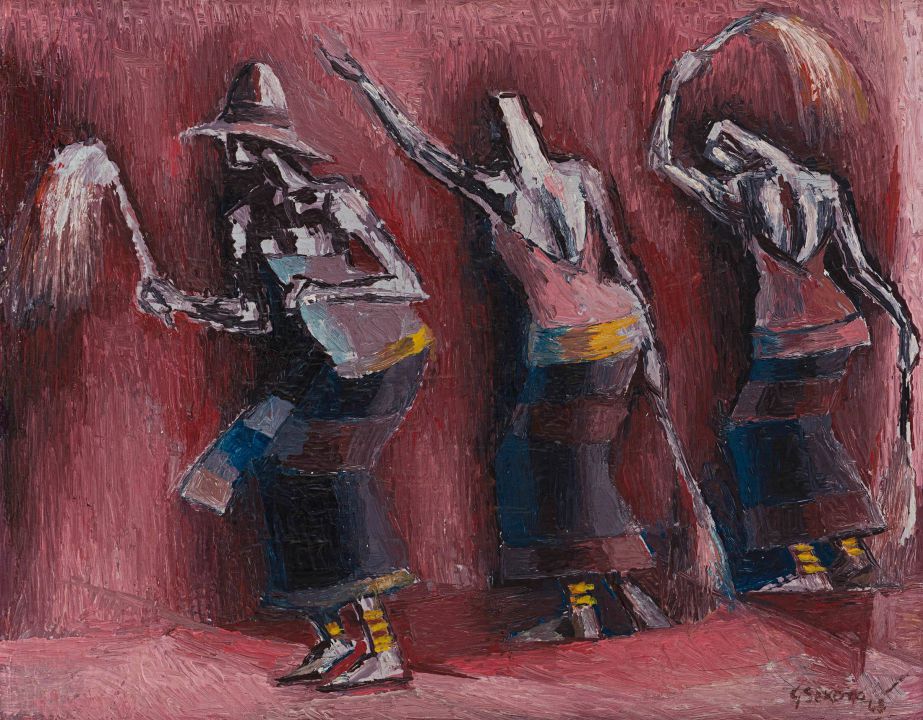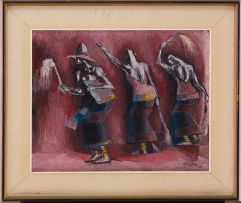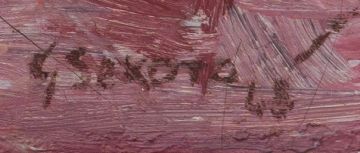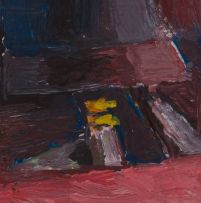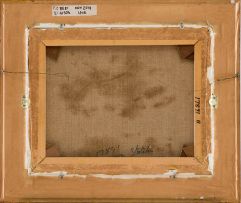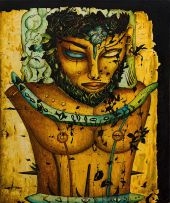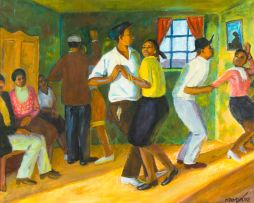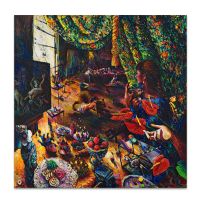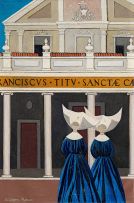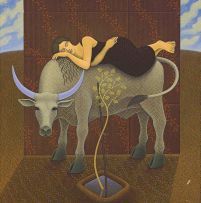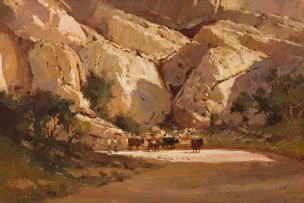Modern, Post War and Contemporary Art
Live Auction, 11 November 2019
Session One
Incl. Buyer's Premium & VAT
About this Item
signed and dated 68
Notes
Arrived in Paris in 1947, attended drawing classes at the l'Académie de la Grande Chaumière.
Gerard Sekoto's preoccupation with the human form cannot simply be reduced to his personal curiosity. Throughout his career, Sekoto produced compelling works delving into the signification of human figures and the spaces they inhabit with great complexity. His oeuvre demands and solicits a careful and mindful consideration of the aesthetic approaches that inform his compositions and how he sought to communicate his fascination with the solemnity of the everyday. The three shadowy, faceless, dancing figures, painted in dark tones of maroon and blue but with stark white highlights where they catch the light, impart a sense of intrigue. The stylistic approach in this work converses seamlessly with other works done in the late 1960s such as Dancing Senegalese Figures (1967) and Dancing Figures (1968) which also exhibit a sense of mystery. In Senegal, he explored his own childhood memories while expressing his fascination with how the people of Casamance's cultural ceremonies 'preserved their African way of living'.1 With his remarkable, painterly proficiency, Sekoto succeeds in giving language to human forms. An accomplishment that singles him out as one of the great modernists.
Thabang Monoa
1. Sekoto, quoted in Barbara Lindop (1995) The Art of Gerard Sekoto, London: Pavillion, page 24.
